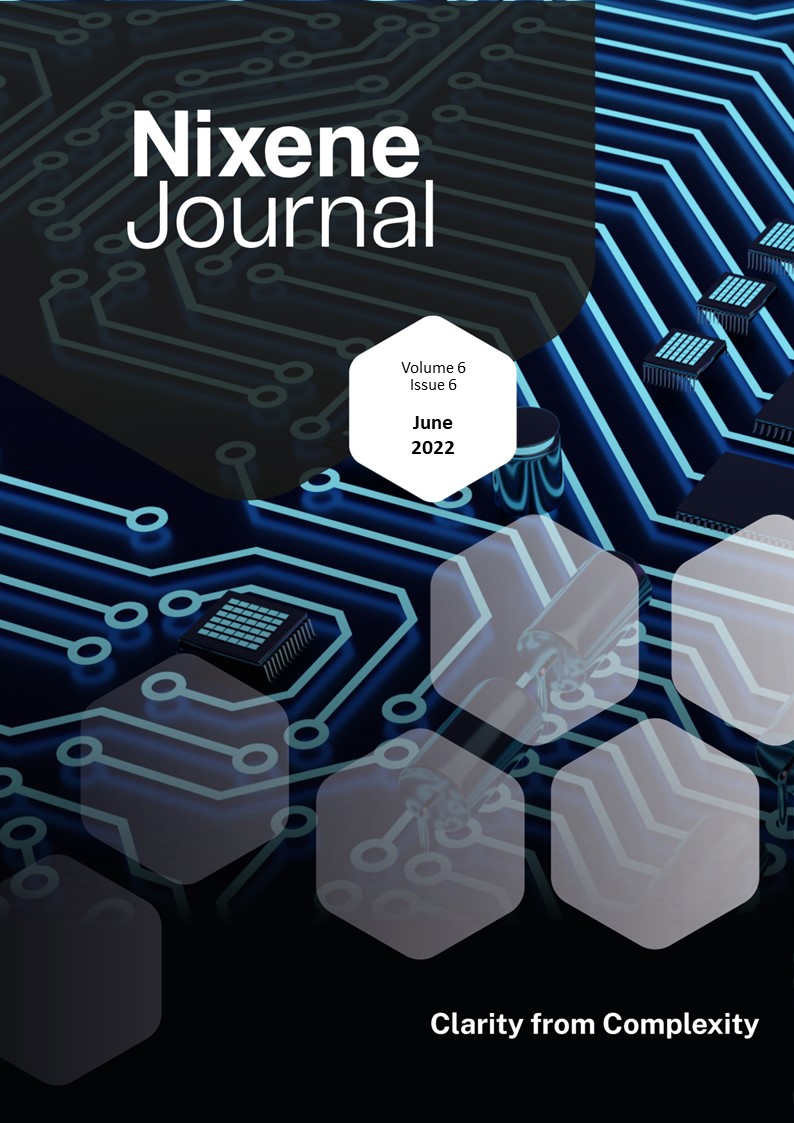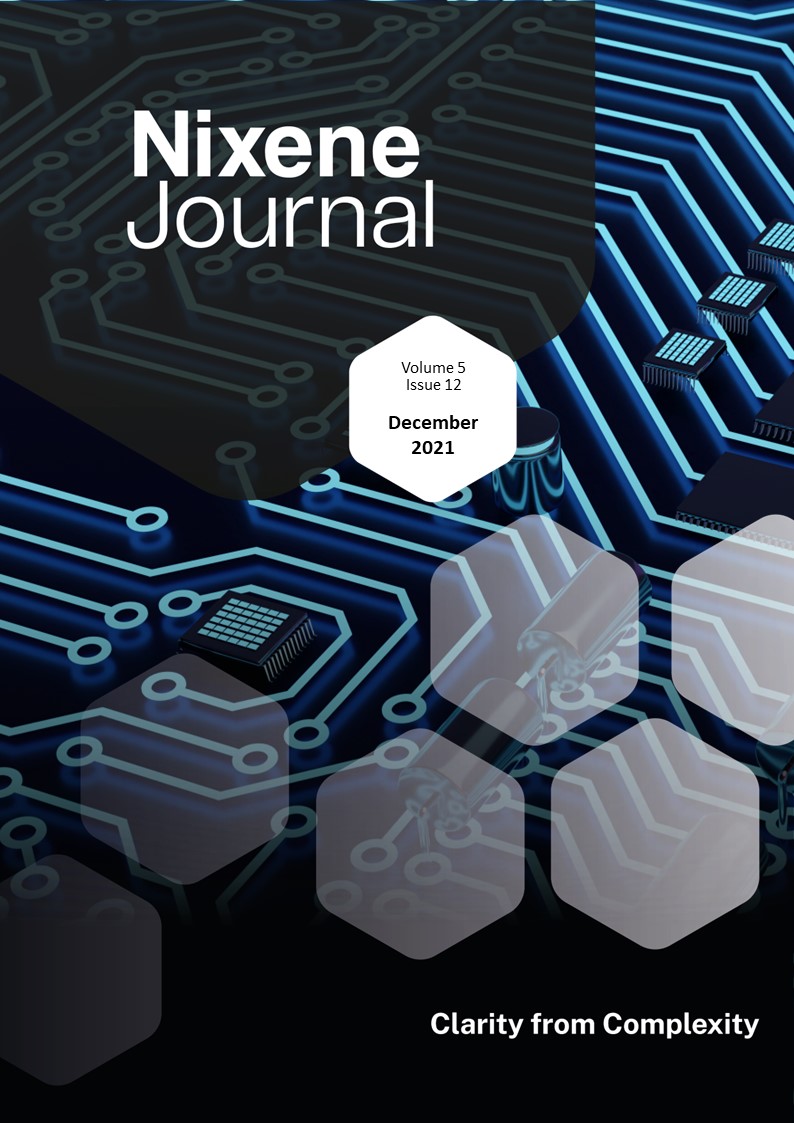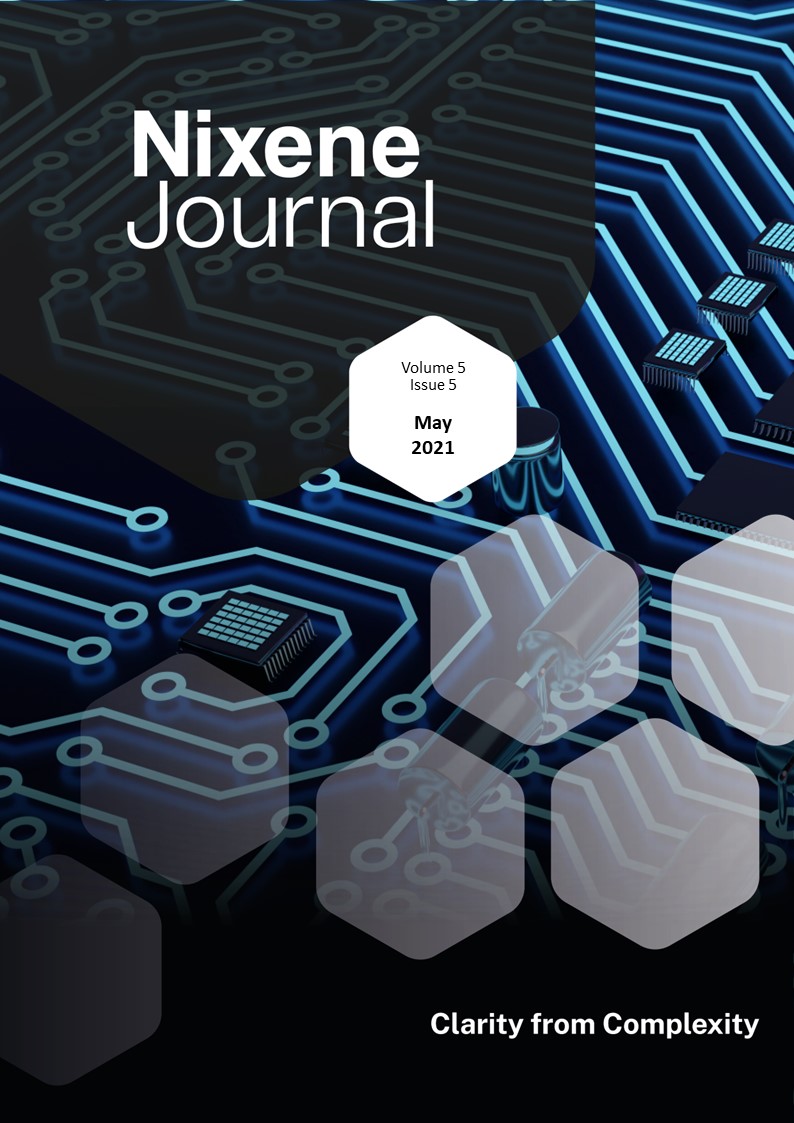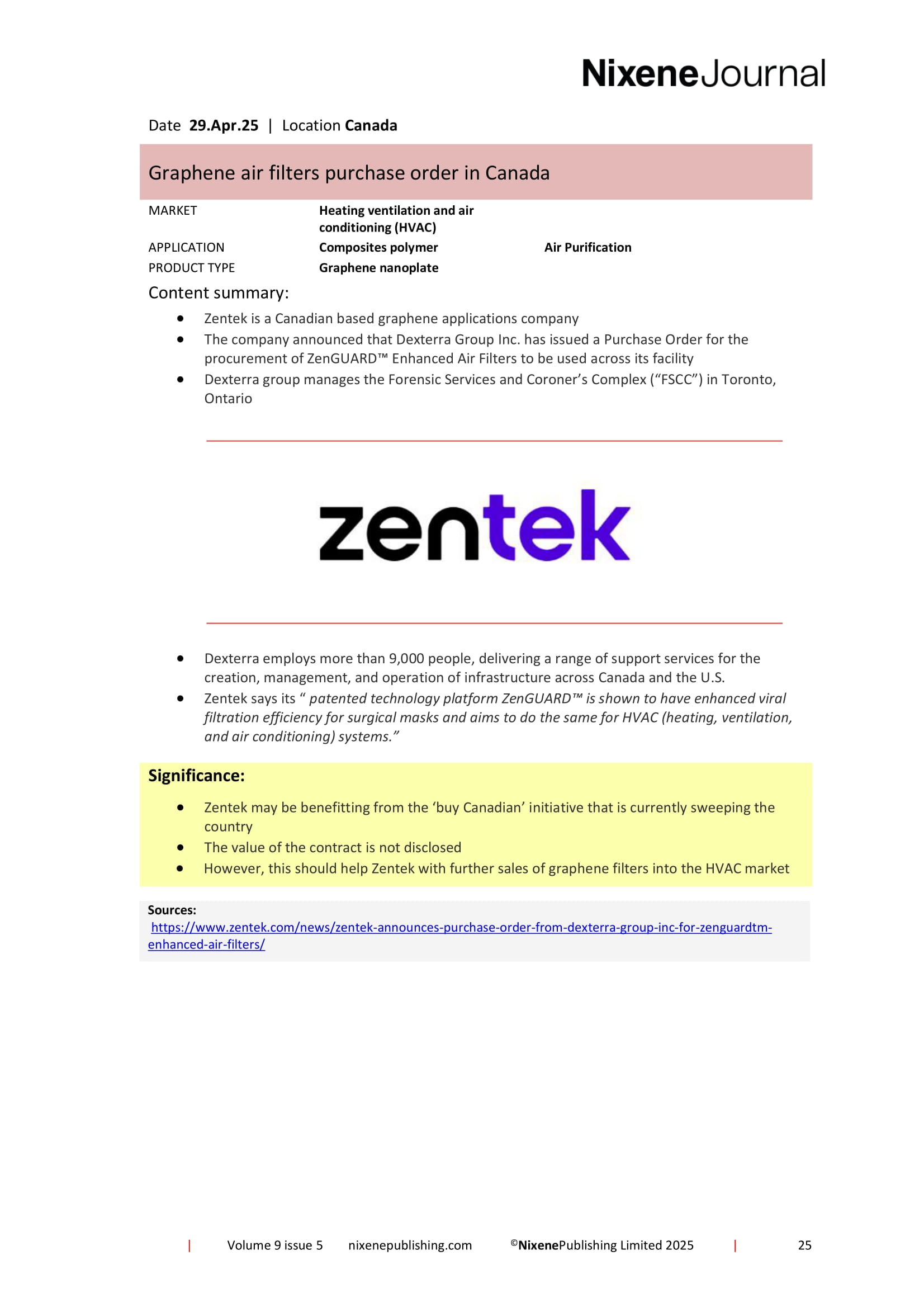Journals
This product is relevant to the following:
Material:
Other:
, ,Locations:
Markets:
Applications:
Product Types:
Technologies:
Related products
-

Vol 6 Issue 6
A sustainable economy is a major aspiration for governments and corporations alike. As we head into the future recycling and upcycling of materials is a major part of this. In principle, plastics should be relatively straightforward to recycle. In practise this is quite challenging because different types of plastics are often bonded together, to achieve different performance criteria, and often end up in waste dumps at the end of the product’s life because these bonded composites are often impossible to recycle. The Ford Motor Company has been making progress addressing this challenge with Prof James Tour’s team at Rice University in the USA. A few days ago, they published the results of their joint work (p.14). They have proved that a variety of waste plastics from end-of-life vehicles can be made into flash graphene powder. The flash graphene was used to make new graphene enhanced polymers which had better mechanical performance, so this can be considered as a prime example of upcycling rather than recycling, (upcycling is the process of converting a material into a new resource of higher quality, value and increased functionality). Ford and Rice are creating an important chapter in the graphene story with this work. Two new two-dimensional (2D) materials have been created for the first time this month. In 2012, a new 2D allotrope (a new form) of carbon called graphyne was thought to be possible to make and some of its properties were predicted. A decade later, a team of chemists at the University of Colorado has actually made small amounts of the material for the first time (p.15). The other new 2D materials are called transition metal carbo-chalcogenides, more easily termed TMCCs. These have been made by a joint team in the USA and Sweden. TMCCs have a combination of electrical conductivity and stability that make them attractive candidates for electronics and energy storage applications. The manufacturing process is also relatively straightforward and scaleable in comparison with similar materials and this could make them a viable commercial proposition in the future. Returning to the sustainability theme; this month, UK graphene manufacturer Levidian Nanosystems Ltd. announced a £700 million deal with the United Arab Emirates (UAE) to supply 500 of its graphene production units. This will capture half a million tonnes of CO2 equivalents (CO2e) over the next five years. The system works by turning methane gas into graphene. The graphene is almost a by-product in this case. The most logical use will be to further reduce CO2 emissions by using the graphene to enhance concrete for many construction projects in the UAE. Graphene is certainly making an impact right where it is needed most – furthering the sustainability agenda, you can find out more by reading on… Adrian Nixon 1st June 2022£45.00 View product -

Vol 5 Issue 12
Two new graphene companies have appeared on the radar this month. They both use a similar process to make graphene from methane gas with hydrogen as a by-product. Looking at the patents of the companies they both use a microwave reactor to tear apart the carbon and hydrogen atoms in methane, the carbon atoms recombine as graphene and the hydrogen atoms recombine to form hydrogen gas. There the similarities pause because the two companies have very different approaches for how to market their developments. The first company is Levidian, they are a relaunch of Cambridge Nanosystems from the UK. Their business model is focussed on using waste methane gas from a customer’s process. They use the reactor to lock up the carbon in the methane as graphene and claim carbon capture credits. The graphene production is secondary to this marketing approach. Using disclosures by the company, I was able to create a mass balance for the Levidian method. It appears that the process captures carbon from methane with around 30% efficiency (p.34). Not bad, but still some further progress to make. The second company is California based Lyten who publicly disclosed their activity just a few weeks ago. They were formed in 2015 and have been operating in stealth mode. Their graphene is used to make the electrode for a lithium sulphur (LiS) battery that has three times the energy density of normal lithium-ion batteries (p.35). They have probably decided to come out of stealth mode to raise capital for the scaling up of their process. The company is currently talking with five original equipment manufacturers (OEMs) in the automobile industry. The weakness of LiS batteries has been their capacity fade with repeated charge / discharge cycles. Lyten say they have improved on previous LiS designs so they might have something of interest for manufacturers of electric vehicles. Levidian patented their process in 2014 and Lyten in 2015. Lyten references the Levidian patents in their applications. This is how we know the two processes are very similar. Things could get interesting if one or the other company makes a lot of money in the future. As Elon Musk observed “A patent is like buying a lottery ticket to a lawsuit”. Staying with graphene powder manufacture, we feature John van Leeuwen of Universal Matter in a special feature (p.7). He is leading the drive to scale up the flash graphene process developed by Prof James Tour at Rice University. Universal Matter is definitely a company to watch in the future. All these graphene manufacturing processes are bottom-up, self-assembling graphene atom by atom to create high quality powders. These processes are in their infancy at present. If they can be scaled, they could disrupt the graphene-from-graphite manufacturers in future as they promise controllable quality graphene. This potential market disruption is something we’ll explore in the future, in the meantime there is much more to explore in this issue… Adrian Nixon, 1st December 2021£45.00 View product -

Vol 5 Issue 5
It is not every month that a new allotrope of carbon is announced. The last time this happened was back in 2019 when researchers in the UK and Switzerland made a ring of 18 atoms called cyclocarbon (Vol3 iss9 p.12). This month a joint team in Germany and Finland have made a flat sheet of carbon atoms with 4 6 and 8 rings. They call this new material a biphenylene network (BPN). This new material seems to be exciting the researchers because it exhibits metallic character. It also opens the door to explore other potential allotropes of carbon. Graphene-metal composites also make another appearance this month. Two Indian organisations have been working on aluminium-graphene composites (Al-G). Tirupati graphite says it has made an Al-G composite that has 95% the electrical conductivity of copper with the light weight of aluminium (although no has been presented yet). The Maharaja Agrasen University has published a peer reviewed paper showing that 1% graphene powder produced a 67% increase in the ultimate strength of the aluminium composite. A joint team in the Netherlands and Germany has made a Pirani pressure sensor from multilayer CVD graphene. It is not only 100 times smaller than the state-of-the-art sensors; it consumes a fraction of the power and is so sensitive it can detect different gas molecules. Aerospace and automotive applications abound. A new car company, Viritech, has announced it is building an electric supercar with a range of 800km and a top speed in excess of 300km/hr. The company has rejected batteries in favour of a hydrogen fuel cell to generate the electricity. The hydrogen storage tank is made from graphene enhanced carbon fibre and is an integral part of the chassis. Production is due to start in 2023. Graphene enhanced concrete made the headlines this month. British construction company Nationwide Engineering and the University of Manchester’s Graphene Engineering Innovation Centre (GEIC) have created graphene enhanced concrete for the whole floor of a new building in Amesbury, UK. As well as being a practical success in CO2 reduction the use of graphene has reduced the quantity of materials involved by 30% and potentially cut the costs between 10 and 20%. This will catch on. Adrian Nixon, 1st June 2021£45.00 View product -

Vol 5 Issue 8
I have learned that news headlines which end with a question mark are nearly always less interesting than those that do not. A case in point: An article was posted at the start of the month asking “Has the funding for graphene dried up?” (p.48). On the same day, Estonian graphene supercapacitor manufacturer Skeleton announced it has secured over €120million in funding over the past 12 months (p.49). This probably makes Skeleton the most commercially successful application for graphene so far. Other companies prefer to avoid the limelight and operate in secret until they are ready to come out into the open. Sometimes their public disclosure is deliberate. Charmgraphene announced this month they are in the roll-to-roll graphene manufacturing business and can make graphene at speeds of 2m per minute and lengths up to 1km (p.36). Sometimes the disclosure is accidental, as might be the case with an academic paper being published by one of the researchers working with graphene photonics company CamGraPhIC (p.21 and p.33). We don’t need to be as concerned with secrecy, quite the reverse. Our purpose is to inform you of the activity we are monitoring in this fast-moving field, special features are part of the way we do this. This issue is the first time Debbie, Rob and I have all written special features in one edition. Debbie has been interviewing Graphene Star. They have developed a very high solids content (25% solids) graphene dispersion that is water based and appears to be very stable. The company has been creating novel coatings with a traditional paint company in the UK. The combination of the old and new seems to be working well for both companies. My contribution is a look at the state of the art of industrial CVD graphene manufacturing. If you ever wondered what the ‘Market, Application and Product Type’ keywords tables are for, then Rob’s special feature will give you part of the answer. We are creating a structured keyword database that builds with each journal issue. This is primary data; you will not find this anywhere else. Rob has been analysing the instances of our keywords over time to explore the market application trends for graphene products since 2017. The results are revealing and show where the global applications development has been and will be for the near future. And, in case you were wondering, yes, Rob’s analysis does include supercapacitors. This appears in the top ten of applications. Dear Reader, we have done more sorting of the signal from the noise, as usual there is so much more to read in this issue. Adrian Nixon, 1st August 2021£45.00 View product



